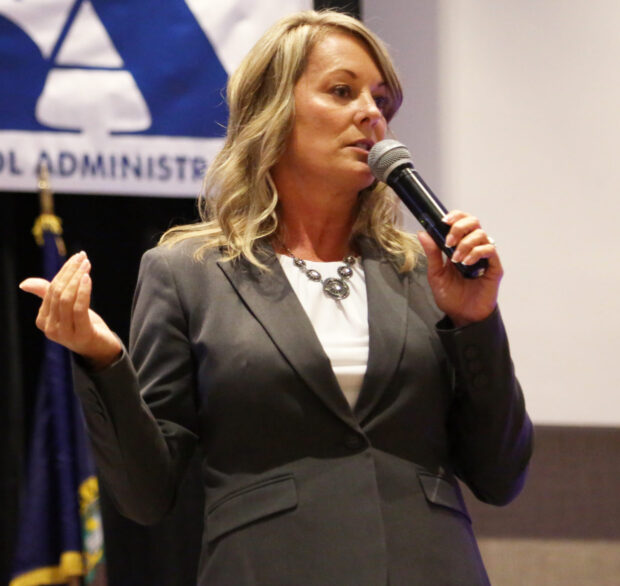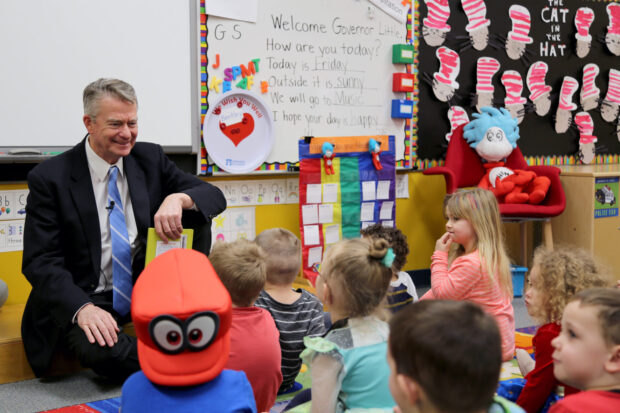Fewer kindergarten students showed up to school this fall prepared to read, according to preliminary Idaho Reading Indicator data released Thursday.
All told, about 55 percent of Idaho’s 90,000 K-3 students who took the IRI hit grade-level reading benchmarks, schools chief Sherri Ybarra said in a news release. The remaining 45 percent did not.
Compared to fall 2018, a higher percentage of first-, second- and third-graders hit benchmarks for fall 2019.

But kindergarten reading — and students’ preparation for their first day of school — continues to be a major concern.
“One major area of concern is that many of our youngest students are entering school without the foundational reading skills they need,” Ybarra said in a written statement. “Only 43 percent of incoming kindergarteners started school this fall reading-ready. That’s down from 45 percent last fall, but more importantly it points to the importance of early literacy intervention.”
The IRI data is important because early reading skills have become a major focal point for state policymakers and education leaders, starting with Gov. Brad Little.
Little’s “Our Kids, Idaho’s Future” K-12 task force has spent most of the summer developing recommendations addressing early literacy and college and career readiness.
During his first year in office, Little worked with the Legislature to double the amount of state funding for the literacy initiative, bringing the budget to $26 million.
A growing number of schools — at least 81 districts and 16 charters —offer at least some form of all-day kindergarten this year. The state pays only for half-day kindergarten, and kindergarten remains optional under state law. But some schools are using literacy initiative funding to expand to all-day kindergarten.

Time and again, Little has stressed that K-3 literacy is one of his very top priorities.
“If we spend half of our state budget on education, we have zero excuse to not have our kids reading proficiently by the end of third grade, and that’s all kids,” Little said Oct. 8 during The Governor’s Summit on the Future of Work.
Little’s task force appears poised to recommend expanding optional, state-funded all-day kindergarten.
But nobody is talking about pre-K. The task force hasn’t touched it and the Legislature has resisted preschool for years, arguing that parents are in the best position to educate young children and the state should improve its K-12 system before expanding to pre-K.
Nationally, Idaho is one of just four states that does not offer state-funded pre-K.
Crucially, the fall IRI data reveals the extent to which students are prepared to read when they arrive for kindergarten, since it is administered at the start of the school year. In May, the spring IRI test reveals student growth during the school year.
Ybarra and state officials said they were pleased with the overall IRI results, noting the improvements in first through third grade.
“We’re excited to see results from the second year of our new early reading test, which provides us with additional data on the needs of our students,” Ybarra said in a written statement. “Overall statewide performance across all four grade levels shows 55 percent of students are at or above grade level, up from about 53 percent last fall, the first administration of the new IRI.”
The timing of the data release is curious. Idaho Education News filed a written public records request Monday, seeking state-, district- and school-level fall IRI data. The following day, Tuesday, an SDE public records specialist said he didn’t have the data.
“The data you have requested is not currently in our system,” the SDE’s Kelly Everitt wrote in an e-mail. “I do not, at present, have a date at which the data will be available.”
Idaho EdNews also emailed Everitt Monday, noting that this week’s State Board of Education’s agenda suggested new IRI data would be discussed during the board meeting.
On Tuesday, SDE spokesman Scott Phillips instead suggested the board would be reviewing older IRI data when it met Thursday.
“That discussion is about literacy targets moving forward and the data is for the 2018-2019 fall and spring assessment, which you already have,” Phillips wrote in an email.
As it turned out, the SDE did in fact release the new data Thursday morning, seven minutes before the State Board meeting began. Karlynn Laraway, the SDE’s director of assessment and accountability, then referenced the new data about an hour into the meeting.
Idaho EdNews also raised concerns about the release of last fall’s IRI data. The SDE declined to release IRI data until three days after Ybarra won re-election in November 2018. Idaho EdNews filed written public records requests for the 2018 IRI data on Oct. 18 and Oct. 26.
IRI data, by the numbers
Percentage of students scoring at grade level
- Kindergarten, fall 2018: 45 percent.
- Kindergarten, fall 2019: 43 percent.
- First grade, fall 2018: 43 percent.
- First grade, fall 2019: 49 percent.
- Second grade, fall 2018: 60 percent.
- Second grade, fall 2019: 63 percent.
- Third grade, fall 2018: 61 percent.
- Third grade, fall 2019: 64 percent.
Source: Idaho State Department of Education.
IRI scores broken down by school districts, schools and student subgroups were not released Thursday. SDE officials said final 2019 IRI data is likely to be released “early next month,” according to the SDE’s news release.
